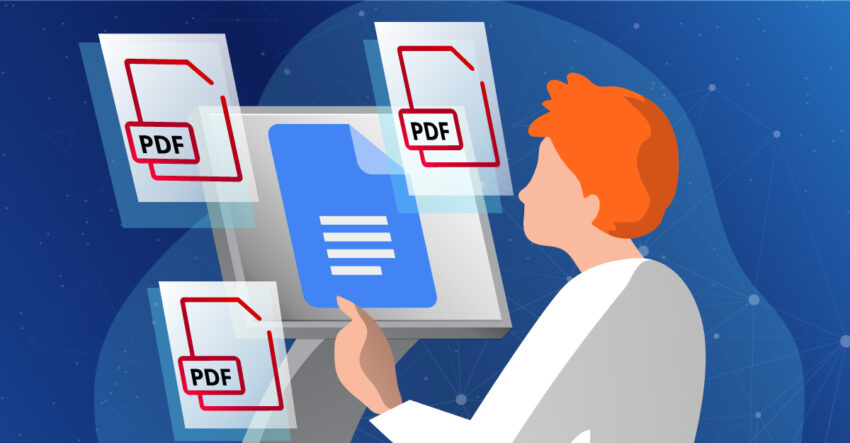PDF files have become an integral part of our digital world, offering a convenient and universal way to share documents across different platforms. However, there has been some concern regarding the security of PDF files. Can a PDF have a virus? In this comprehensive article, we will delve into the intricacies of PDF security, addressing common misconceptions and providing valuable insights into the potential risks associated with PDF files.
Table of Contents
Understanding PDF Files
PDF, short for Portable Document Format, is a file format developed by Adobe Systems in the 1990s. It was designed to enable documents to be viewed and printed consistently across various operating systems and software applications, regardless of the original software used to create them.
PDF files encapsulate text, images, fonts, and other elements necessary to display the document accurately. This self-contained nature of PDFs makes them ideal for sharing files while preserving their original formatting, regardless of the software or device used to open them. However, this very characteristic has led to concerns about the potential for malicious content within PDF files.
The Myth of Viruses in PDFs
There is a common misconception that PDF files can directly contain viruses or malware that can infect a user’s computer or device. However, it’s important to clarify this misunderstanding. Technically speaking, PDF files cannot “contain” viruses in the same way that executable files (such as .exe) can. Viruses typically require a program or script to run and execute malicious actions, which is not a characteristic of PDF files themselves.
While PDFs cannot directly contain viruses, they can still be used as a vector for malware distribution. This means that a PDF file can be crafted in a way that exploits vulnerabilities in the PDF reader software, leading to the execution of malicious code. These vulnerabilities can exist in the PDF reader itself or in other software components that interact with PDF files, such as plugins or JavaScript engines.
Exploiting PDF Vulnerabilities
PDF vulnerabilities can be exploited in various ways to deliver malware or carry out other malicious activities. Let’s explore some common techniques used by attackers to exploit PDF weaknesses:
Malicious Attachments
PDF files can include attachments, such as images, scripts, or other files. Attackers can embed malware within these attachments, aiming to exploit vulnerabilities in the software that opens them. For instance, an innocent-looking PDF could contain a malicious JavaScript file as an attachment, which, when opened, triggers the execution of the malicious code.
Exploiting Software Vulnerabilities
PDF readers, like any other software, can have vulnerabilities that can be exploited by attackers. These vulnerabilities may allow them to execute arbitrary code, escalate privileges, or gain unauthorized access to a user’s system. Once a vulnerability is identified, attackers can create specially crafted PDF files that trigger the exploit when opened, potentially leading to malware installation or other malicious activities.
Social Engineering Attacks
In addition to technical vulnerabilities, attackers often rely on social engineering techniques to trick users into opening infected PDF files. They may use enticing subject lines, and urgent requests, or disguise the file as something harmless or important to lure users into opening it. By exploiting human psychology and curiosity, attackers increase the chances of their malicious PDFs being opened, thus initiating the attack.
Protecting Against PDF-Related Threats
While it’s crucial to be aware of the potential risks associated with PDF files, it’s equally important to adopt proactive measures to mitigate these risks. Here are some best practices to enhance your security when dealing with PDFs:
Keep Software Updated
Regularly update your PDF reader software, as well as any other software or plugins that interact with PDF files. Software updates often include security patches that address known vulnerabilities, reducing the risk of exploitation.
Exercise Caution When Opening PDFs
Exercise caution when opening PDF files, especially if they come from unknown or untrusted sources. Be particularly vigilant with email attachments, as they are a common delivery method for malicious PDFs. Verify the sender’s identity and scan attachments with up-to-date antivirus software before opening them.
Disable Auto-Execution Features
Disable automatic execution of JavaScript or embedded multimedia content within PDF files. This can be done within the settings of your PDF reader software. By disabling these features, you can prevent potential exploits that rely on executing malicious code.
Scan PDF Files for Malware
Employ robust antivirus software that scans files for malware, including PDF files. Regularly scan your system and files to detect any potential threats.
Educate Yourself and Others
Stay informed about the latest security threats and educate yourself about safe computing practices. Share this knowledge with your colleagues, friends, and family to help create a more secure digital environment for everyone.
Conclusion
In conclusion, while PDF files themselves cannot directly contain viruses, they can still pose a risk if exploited by attackers. Understanding the potential vulnerabilities and adopting security best practices is crucial to mitigate these risks effectively.
By keeping software updated, exercising caution when opening PDFs, disabling auto-execution features, scanning files for malware, and staying informed, you can confidently navigate the digital landscape and minimize the chances of falling victim to PDF-related threats.
- What is Epic Games Launcher and How to Install It? - July 15, 2024
- What Is Audius Music Streaming App and How Does it Work? - July 13, 2024
- The 10 Best Astronomy Apps for Stargazing - July 12, 2024

